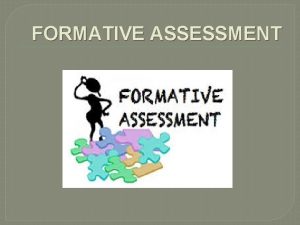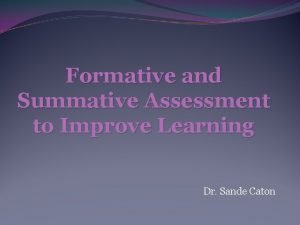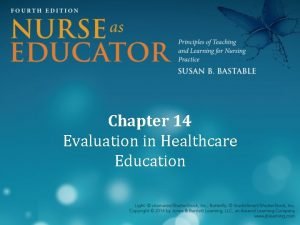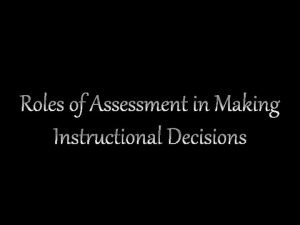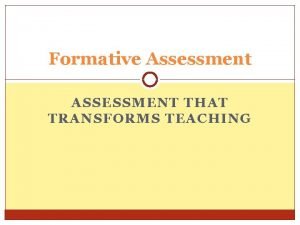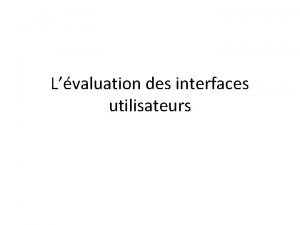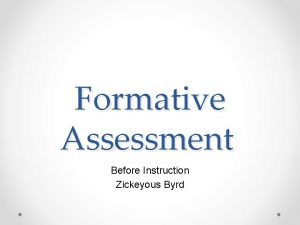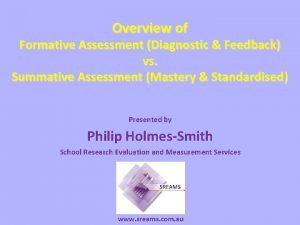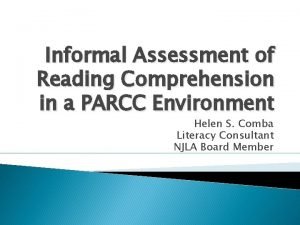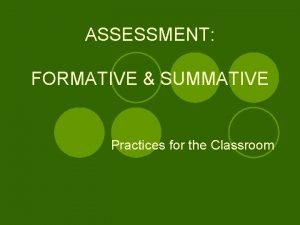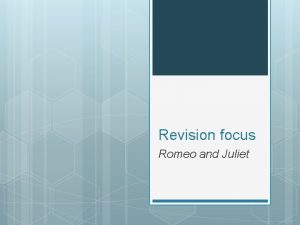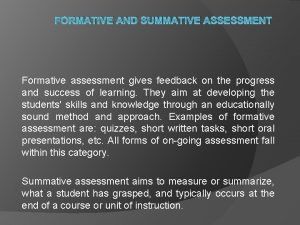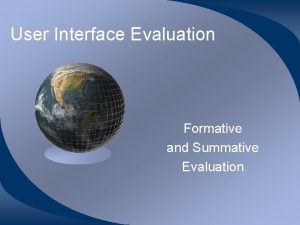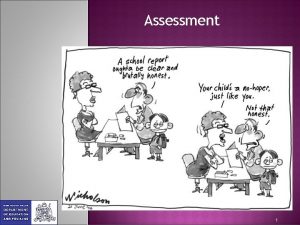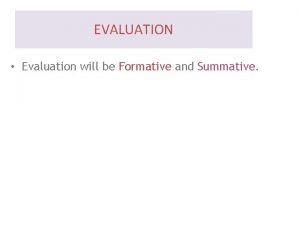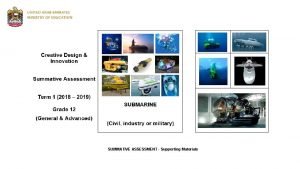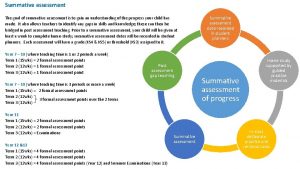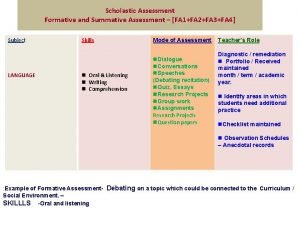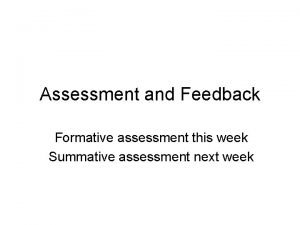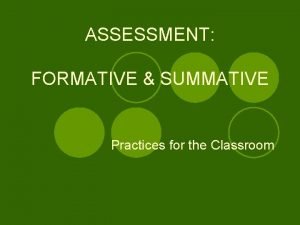FORMATIVE and SUMMATIVE ASSESSMENT in the Arts TAPCO












- Slides: 12

FORMATIVE and SUMMATIVE ASSESSMENT in the Arts. TAPCO 2015 -16 DELPECH

• https: //www. youtube. com/watch? v=b. TGn. Jnu. V Nt 8

Formative • The goal of formative assessment is to monitor student learning to provide ongoing feedback that can be used by instructors to improve their teaching and by students to improve their learning. More specifically, formative assessments: • help students identify their strengths and weaknesses and target areas that need work • help faculty recognize where students are struggling and address problems immediately • Formative assessments are generally low stakes, which means that they have low or no point value. Examples of formative assessments include asking students to: • draw a concept map in class to represent their understanding of a topic • submit one or two sentences identifying the main point of a lecture • turn in a research proposal for early feedback

Summative • The goal of summative assessment is to evaluate student learning at the end of an instructional unit by comparing it against some standard or benchmark. • Summative assessments are often high stakes, which means that they have a high point value. Examples of summative assessments include: • a midterm exam • a final project • a paper • a senior recital • Information from summative assessments can be used formatively when students or faculty use it to guide their efforts and activities in subsequent courses.

Common Assessments and Grading System for the Arts: • How are we documenting our evaluations? Do students have access to them? • How often do students receive teacher feedback (oral & written)? • How often do students receive peer feedback (oral & written)? • How often do students have access to the rubrics teachers use to grade them? Do they get a chance to use these rubrics to give feedback to peers?

Arts Team’s Task: The Arts Team will create a uniform grading system across the Arts disciplines taking into account the following:

Arts Team’s Task (cont. ) -School marking period schedule -Regents Schedule - Possible Common tasks or Topics: Execution rubrics, Creative task rubrics, Final Project rubrics. Commonly scale rubrics (ELA, Social Studies, etc. )

Tasks (Nov. Dec. ) • Create aligned “common assessments” with its correspondent rubrics across the disciplines looking at Atlas Curriculum Maps (Thorpe, Delpech, Cooper, Debellis, Galimidi, Golberg, Casper, Sklar & Giardini ) and Blueprint. • Contrast and compare frequency of assessments between arts and academic classes.

Tasks (Nov. Dec. ) • Involve the learner in the assessment process: create class activities for students to get familiar with the rubrics teachers use to grade them. • Create assignments and post them on skedula from the beginning of the semester.

Tasks (Nov. Dec. ) • Provide timely feedback that can be used to improve future performance

Suggested activities: • Create the Quiz: students come up with their questions about a topic (F. A. ). • Discuss model answers or exemplars immediately after students submit their work, while the ideas are fresh in their minds (Q&A) • Muddy moment: What frustrates and confuses you about_____? (F. A).

Suggested activities: • Video/gallery walk: Students evaluate each others using teacher’s rubrics.
 Formative evaluation meaning
Formative evaluation meaning Formative assessment
Formative assessment Evaluation in healthcare education
Evaluation in healthcare education Formative summative diagnostic
Formative summative diagnostic Summative and formative assessment
Summative and formative assessment Formative vs summative usability testing
Formative vs summative usability testing Formative vs. summative assessment venn diagram
Formative vs. summative assessment venn diagram Assessment formative summative diagnostic
Assessment formative summative diagnostic What is summative assessment
What is summative assessment Formative vs summative
Formative vs summative Tapco middle school
Tapco middle school Tapco middle school
Tapco middle school Romeo and juliet summative assessment
Romeo and juliet summative assessment
